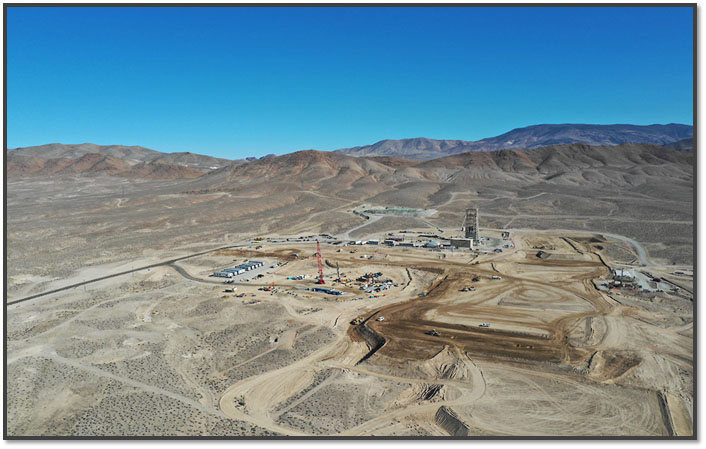The Gold Report: In light of increasing technology demands and both natural and political limitations on supply, which critical metals segments and companies are poised to benefit in the coming years?
Joe Martin, chairman, Cambridge House International Inc.: The developing world supply crisis of critical metals will be met only by the determination and imagination of Canadian mineral exploration companies that will find, over time, and with the assistance of financial organizations and end-user manufacturers, mineable deposits of these metals.
Thomas Drolet, president, Drolet and Associates Energy Services, Inc.: The world of energy supply and demand is in turmoil. On the supply side, geopolitical instability in the Middle East and North Africa and the lack of active and prolific drilling in the Gulf of Mexico and federal lands in the U.S. make oil supply predictions problematic. Some traditional oil suppliers like the North Sea, Mexico and Venezuela are in a downtrend. World-changing technology breakthroughs in the possibility of massive increases in shale gas production are being offset by concerns about contamination of ground water. Coal use is a victim of the perception that global warming will eventually sink our lands under the ocean's waves. Renewables like solar and wind are coming on, but are doing so from such a low base that they may not reach 5% of totals until post-2050. Nuclear power has suffered a heart attack at Fukushima and is in intensive care. On the energy demand side, fears of a second dip recession and slowdowns in Europe and Asia have had the alphabet soup of economic agencies including the DOE, OECD, IAEA, IEA and OPEC, changing their projections up and down like a toilet seat.
We need to focus on a balanced and a widely diverse array of energy supply sources for the future. Base-loaded nuclear and geothermal power plays a substantial and necessary place in a balanced supply future. Critical metals such as beryllium, boron, gadolinium, thorium, uranium, dysprosium, molybdenum, bismuth and graphite will play key roles in meeting these growing demands.
Clint Cox, founder, Anchor House, Inc.: Rare earths have become exceedingly hot as they play a crucial role in high tech and green energy development and defense applications in light of China's growth and involvement in the commodities markets. Based on recent history that led to the current market explosion, it will be important to examine our assumptions and explore possible scenarios for the industry moving forward.
 Jon Hykawy, analyst, Byron Capital Markets: Byron Capital Markets believes in a long-term secular shift toward energy efficiency, both through new technologies and weight saving. This shift will be driven because of increasing prices for fossil fuels. While I, personally, am not a peak oil theorist, I am also realistic enough to understand that feeding the Brazil, Russia, India and China beast with cheap oil will demand a neglect of the environment that not many oil-producing regions will sustain. We believe that electrification of transport fleets and maximization of our electrical grids are important future areas of development. Electrifying cars will pull on materials such as rare earths (for their weight-saving and efficiency gains), lithium (for batteries), vanadium (for use in better and stronger metal alloys, as well as in next-generation batteries), graphite (lithium battery anodes), scandium (advanced aluminum alloys), and barium (for ultracapacitors). Maximizing the existing electrical grid demands storage and more generating capacity, so critical materials include uranium (in reactors), lithium and vanadium (for storage). Copper is also an increasingly critical commodity.
Jon Hykawy, analyst, Byron Capital Markets: Byron Capital Markets believes in a long-term secular shift toward energy efficiency, both through new technologies and weight saving. This shift will be driven because of increasing prices for fossil fuels. While I, personally, am not a peak oil theorist, I am also realistic enough to understand that feeding the Brazil, Russia, India and China beast with cheap oil will demand a neglect of the environment that not many oil-producing regions will sustain. We believe that electrification of transport fleets and maximization of our electrical grids are important future areas of development. Electrifying cars will pull on materials such as rare earths (for their weight-saving and efficiency gains), lithium (for batteries), vanadium (for use in better and stronger metal alloys, as well as in next-generation batteries), graphite (lithium battery anodes), scandium (advanced aluminum alloys), and barium (for ultracapacitors). Maximizing the existing electrical grid demands storage and more generating capacity, so critical materials include uranium (in reactors), lithium and vanadium (for storage). Copper is also an increasingly critical commodity. Michael Berry, publisher, Morning Notes: Why are some resources considered "critical" and some abundant and therefore not of interest? We subscribe to Jeremy Grantham's viewpoint that we have entered a new era of finite and dwindling natural resources. He says, "The world is using up its natural resources at an alarming rate, and this has caused a permanent shift in their value." Professor Kenneth Pomeranz believes we are in the "grip of a great global growth divergence." His book, The Great Divergence; China, Europe and the Making of the Modern World, details the reasons why growth and quality of life will accelerate in emerging countries. The UN has declared that the world's population will grow to 10.1 billion by 2100. Its forecast of the population in 2050 was revised upwards by 156 million to 9.3 billion quality-of-life seeking humans. Professor Jared Diamond suggests a similar idea in his January 2008 New York Times op-ed, "Are We Consuming Ourselves Away?" He believes world population, adjusted for increased quality of life, is an eye-popping 72 billion.
Michael Berry, publisher, Morning Notes: Why are some resources considered "critical" and some abundant and therefore not of interest? We subscribe to Jeremy Grantham's viewpoint that we have entered a new era of finite and dwindling natural resources. He says, "The world is using up its natural resources at an alarming rate, and this has caused a permanent shift in their value." Professor Kenneth Pomeranz believes we are in the "grip of a great global growth divergence." His book, The Great Divergence; China, Europe and the Making of the Modern World, details the reasons why growth and quality of life will accelerate in emerging countries. The UN has declared that the world's population will grow to 10.1 billion by 2100. Its forecast of the population in 2050 was revised upwards by 156 million to 9.3 billion quality-of-life seeking humans. Professor Jared Diamond suggests a similar idea in his January 2008 New York Times op-ed, "Are We Consuming Ourselves Away?" He believes world population, adjusted for increased quality of life, is an eye-popping 72 billion. What do these facts have to do with critical metals? Last week I was asked once again to testify to Congress on critical rare earth elements. I told them, "There is no REE emergency, just politics as usual."
However, due to increasing awareness of finite resources, long lead times, high resource development expenses, scarcity of world class deposits, ongoing materials research, growing resource nationalism and destruction of the U.S. industrial base, it has become evident that almost all domestic resource extraction and associated supply chains have moved offshore with intellectual property (IP) development. These are the key issues of the critical metal conundrum.
The issue is broader than that of rare earth elements (REEs) and their associated supply chains. REEs are the tip of the critical resource iceberg. The market for high-grade electrolytic manganese (EMM) is controlled by China. The U.S. has no producing manganese mines. We rely entirely on China, which is pulling back on its EMM exports. Manganese is critically important in numerous applications. U.S. vanadium supply is also constrained with no domestic production. Vanadium has important applications as battery technology. Large flake graphite is necessary for lithium-ion batteries, fuel cells and nuclear reactor development. China controls 80% of this market and is pulling back on its export availability. Other resources that will "go critical" include molybdenum, niobium, indium, scandium, helium (especially helium-3), algae-based bio fuels and others with new materials R&D. We must all keep an open mind on the composition of the critical resource space. From a discovery investing viewpoint, it will be a rewarding trip.
 John Kaiser, editor, Kaiser Research Online: Critical metalsómaterials which bestow a unique functionality on an end-product with value that vastly exceeds the cost of the critical metal inputóare becoming increasingly important in the world's efforts to grapple with looming energy issues. Three themes dominate the discussion: long-term physical shortages of fossil fuels as emerging economies expand, the destabilizing consequences of rising greenhouse gas emissions related to fossil fuel consumption, and insecurity about energy fuel supply channels arising through the erosion of American military hegemony that will likely accompany the gradual loss of America's dominant role in the global economy.
John Kaiser, editor, Kaiser Research Online: Critical metalsómaterials which bestow a unique functionality on an end-product with value that vastly exceeds the cost of the critical metal inputóare becoming increasingly important in the world's efforts to grapple with looming energy issues. Three themes dominate the discussion: long-term physical shortages of fossil fuels as emerging economies expand, the destabilizing consequences of rising greenhouse gas emissions related to fossil fuel consumption, and insecurity about energy fuel supply channels arising through the erosion of American military hegemony that will likely accompany the gradual loss of America's dominant role in the global economy. Five broad approaches tackle these problems: 1) innovation geared toward greater efficiency in the extraction of energy from fossil fuels so as to postpone depletion of these resources, 2) innovation aimed at reducing the consumption of energy by making products lighter and smaller, 3) development of renewable energy sources such as wind and solar, which eventually replace reliance on fossil fuels, decouple greenhouse gas emissions from economic growth and reduce the vulnerability posed by long-distance fuel supply channels, 4) cultivation of transformational technologies such as the electric car which shift the fuel foundation on which existing technologies depend and 5) extending the life cycle of goods and processes through greater durability.
An example of the first approach is work on solid oxide fuel cells which convert fossil fuels such as natural gas into energy through electrochemical processes with much higher efficiency than provided by traditional combustion. An example of the second approach is the emergence of powerful rare earth-based magnets which replace heavy ferric magnets and LED lighting that replaces incandescent lights. The third approach is evident in new thin-film photovoltaic technology which taps solar energy with a greater efficiency, and the development of battery technology that charges rapidly, has a higher storage capacity relative to volume, can handle power demand surges, and are safe. The fourth approach can be seen in the emergence of hybrids, plug-in hybrids, and entirely electric cars. The fifth approach is in fact quite radical in that it involves the rejection of a business model which fosters high turnover by manufacturing goods that are cheap but disposable and marketed with a fashion spin designed to encourage a quest for "something different." Higher quality and more durable goods cost more upfront and represent a new style of financial "saving" in that the consumer has less money available for the purchase of other goods while enjoying the benefit of the durable good over a longer period. They also represent an energy saving due to the less frequent consumption of energy related to fabrication of a replacement good.
Critical metals come into play with all five strategies as materials science R&D explores how to harness the properties of "obscure" elements such as rare earths, beryllium, indium, tellurium, zirconium, lithium, graphite, tantalum, niobium, gallium, scandium, vanadium and tungsten. As the world grapples with its very large and serious energy problem, securing an adequate and diversified supply of the volumetrically minor but functionally critical inputs for the broader energy solutions is a task ideally suited for the junior resource sector.
The Critical Metals Investment Symposium is a major conference bringing together the multitude of parties involved in finding solutions to the developing world crisis in the supply shortage of rare earth and strategic metals and strategic materials. For pricing and to pre-register to receive free admittance to the World Resource Investment Conference, go to www.cambridgehouse.com



























































